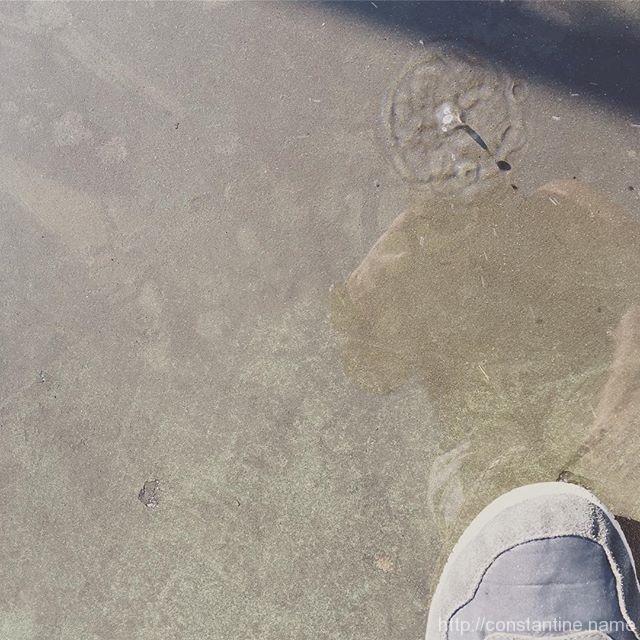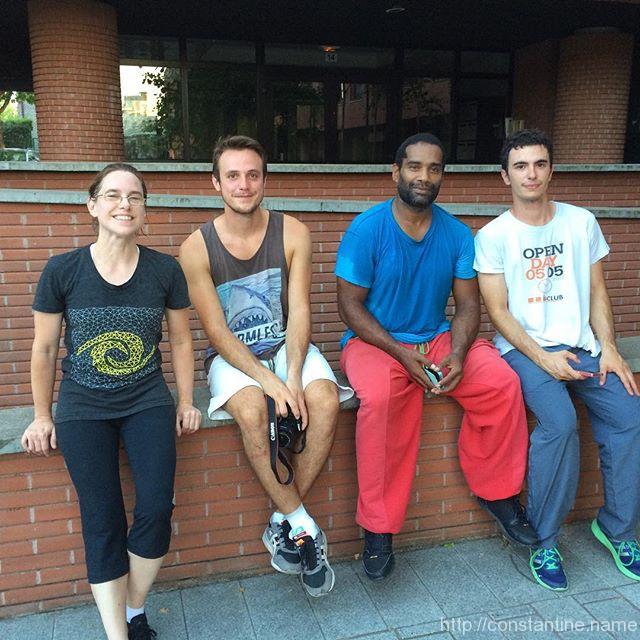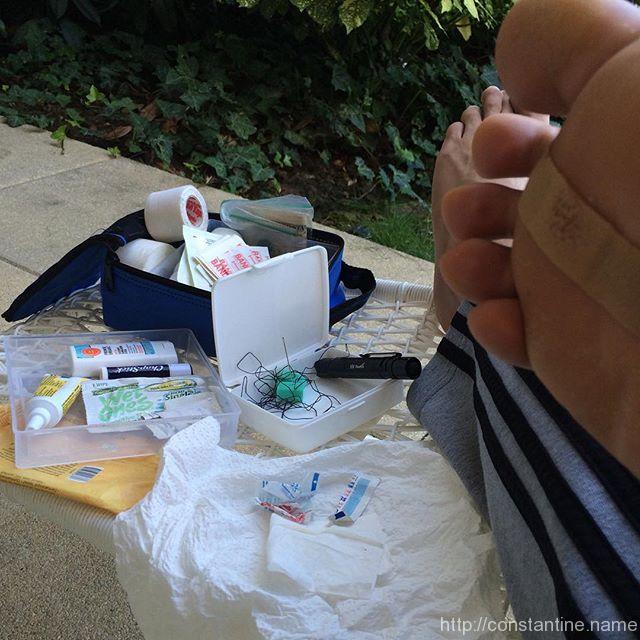The eye is the inlet to the soul, and it is well to beware of him whose visual organs avoid your honest regard.
~ Hosea Ballou
slip:4a1464.
The eye is the inlet to the soul, and it is well to beware of him whose visual organs avoid your honest regard.
~ Hosea Ballou
slip:4a1464.
To this day, if I realize I’m in a downward spiral I bring my attention to my next decision. (“Realize” being the important word there. I am too often actually in a downward spiral without realizing it is so.) Left foot, or right foot next? Take a nap, or continue what I’m doing? What’s the smallest next thing I can do, which would be a positive? Maybe the best thing I can do is to simply cease everything and pause.
Bodies start to hurt when they aren’t moved enough, but also because when they are moved, some parts aren’t moving with ease. This then makes it harder to move enough, and our movements get more diminished, immobility and pain arises, and we think it’s all inevitable.
~ Katy Bowman from, Book Excerpt: Rethink Your Position – Nutritious Movement
slip:4unuge1.
I find it empowering to know that making small, simple decisions about movement can profoundly affect my overall health and mobility. I’m not taking Bowman’s word for it though (she does have lots of great things to say about movement) I’ve simply taken note of what happens. Sometimes (often?) the better, small choice is the slightly more difficult now option. As Jerzy Gregorek put it, “easy choices, hard life. Hard choices, easy life.” Choose wisely.
ɕ
Any sufficiently advanced negligence is indistinguishable from malice.
~ Deb Chachra
slip:4a1250.
The more you say, the more likely you are to blow past opportunities, ignore feedback, and cause yourself suffering. The inexperienced and fearful talk to reassure themselves. The ability to listen, to deliberately keep out of a conversation and subsist without its validity is rare. Silence is a way to build strength and self-sufficiency.
~ Ryan Holiday
slip:4a988.
A somatic approach to movement can help us get reacquainted with ourselves. This is our home base after all. It’s our guts and tissues, our thoughts and perceptions. It’s our subjective experience of life. […] When we cultivate self-awareness through movement, we come up against the boundary of self and other. We recognize that we don’t live in a vacuum.
~ Chandler Stevens from, «http://chandlerstevens.com/blog/2016/11/9/connection-relation-and-somatic-ecology»
The word “reacquainted” leapt out at me. Every time I truly pause to pay attention, I’m immediately confronted by my physical self. There’s the inevitable settling towards senescence, and frankly that doesn’t bother me. I enjoy looking back at the things I was once capable of and thinking, well, that was nice! No, the confrontation I’m talking about is the stuff that I know is my fault… and I’m not going to list physical metrics. Suffice to say: All I’d have to do it remove the stress and everything else would settle back to a wonderful baseline that I’d love to return to.
ɕ
If you shape your life according to nature, you will never be poor. If you shape your lie according to people’s opinions, you will never be rich.
~ Epicurus
slip:4a372.
Few working scientists can give a ground-up explanation of the phenomenon they study; they rely on information and techniques borrowed from other scientists. Knowledge and the virtues of the scientific orientation live far more in the community than the individual. When we talk of a “scientific community,” we are pointing to something critical: that advanced science is a social enterprise, characterized by an intricate division of cognitive labor. Individual scientists, no less than the quacks, can be famously bull-headed, overly enamored of pet theories, dismissive of new evidence, and heedless of their fallibility. (Hence Max Planck’s observation that science advances one funeral at a time.) But as a community endeavor, it is beautifully self-correcting.
Beautifully organized, however, it is not. Seen up close, the scientific community—with its muddled peer-review process, badly written journal articles, subtly contemptuous letters to the editor, overtly contemptuous subreddit threads, and pompous pronouncements of the academy— looks like a rickety vehicle for getting to truth. Yet the hive mind swarms ever forward. It now advances knowledge in almost every realm of existence—even the humanities, where neuroscience and computerization are shaping understanding of everything from free will to how art and literature have evolved over time.
~ Atul Gawande from, Atul Gawande and the Mistrust of Science
slip:4ufoau1.
I can’t add to that. I only wanted to be sure that others see it too.
Meanwhile, I never bothered to read Gawande’s hit book, The Checklist Manifesto. (To be candid, bordering on obnoxious: Time is limited, and I don’t need to seek more information about processes. I’ve got that sorted.) But it has hovered in my awareness none the less. Recently, two unrelated sources gave over-the-top praise for Gawande’s newer book, Being Mortal. On those recommendations alone it’s now in my reading queue. I’ve cracked it open, and done the preliminary reading… Have you read it? Do you have any thoughts on it?
ɕ
What man actually needs is not a tensionless state but rather the striving and struggling for a worthwhile goal, a freely chosen task. What he needs is not the discharge of tension at any cost but the call of a potential meaning waiting to be fulfilled by him.
~ Viktor Frankl
slip:4a480.
Understanding community has always been a challenge for me. The first key understanding was that “community” is just an abstract concept; A community does not exist in the world as a concrete thing I can point to, touch or clearly delineate. Instead, when asked to explain community, I list things which I feel identify a community: its persistence, members’ unifying or common interests, having a focus in a specific physical or online space, etc. But when I really start digging in, it’s all simply interpersonal connections, behavior, communication, expected norms, shared identity, etc.. If that’s true, then functional interpersonal communication is necessary for the creation and continued existence of a healthy community.
My question these days is: What is sufficient for the creation and continued existence of a community?
ɕ
Suffering is nothing more than a lack of consciousness. The more conscious you become, the less you suffer. The act of raising your consciousness is really a process of letting go of every thought that causes you to suffer. This process can take considerable time, but it does work. Every step you take in this direction will yield an improvement.
~ Steve Pavlina from, Ask Steve – Staying Conscious While Under Attack – Steve Pavlina
slip:4usebo24.
Self-improvement is an exercise in lifting oneself up by the bootstraps; Quite impossible and quite necessary.
ɕ

Tennis court puddle selfie (w sweat) after warmup run. Now, I think maybe some 101. Super sore and tired from yesterday… this should fix it right up. #100days #artdudeplacement
ɕ

She spent today in Evry chasing a familiar face!
ɕ

It’s only a splinter! I usually only show the rosy side of travelling and jumping on stuff. Well, seems I picked up a wee sliver of England at RDV XI. (ask me about the barefoot bail into thorns) Yes my tetanus immunization is up to date. THIS is why you should always travel with your personalized med kit… #DIY Tracy trained all day while I did my “wimpy lion with a thorn in its paw” imitation. Hopefully good to go tomorrow #famousLastWords (PSA: early symptoms of Tetanus include jaw spasms, drooling, excessive sweating and irritability? …oh i’ve had that for 45 years then :P
ɕ

Our project for Mon thru Fri is Lumpy Ridge.
We’ll head up to the town outside of Estes Park to pick up provisions and to visit the local climbing shop for a guide book and local knowledge. We’ve a campsite a short distance from the ridge. So we can ride our bikes a few miles to access whatever we want to climb.
So far, my visit to colorado has been pretty easy; hotel rooms, and climbing about half the days. But this week is going to be a lot more climbing. Yesterday (blog post/photos not yet up), we climber two single-pitch routes on Cob Rock in Boulder Canyon to get me some time doing jam cracks on granite. Oof! Burly stuff.
ɕ